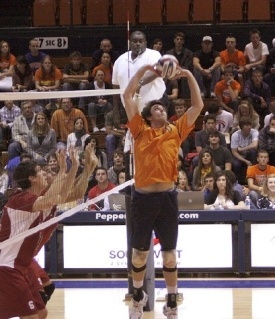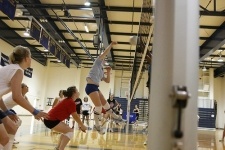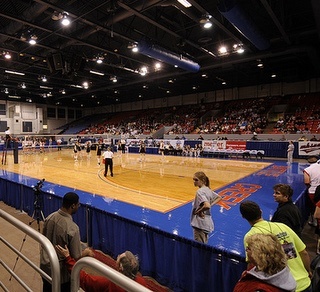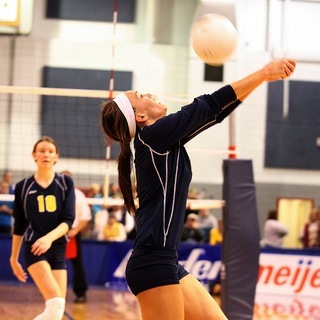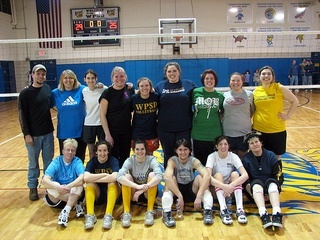Many new players and coaches wonder about volleyball formations and why they would want to be used. This page will explain in detail each of the possible formations and why you would use them.
Volleyball Formations
Keep in mind that on this page, we are discussing the number of people that are receiving the serve for passing purposes. If you would like more information on volleyball offenses, you can look at that page for more information on each offense. This page focuses completely on the number of passers in any offense.
Two Passers
This is one of the volleyball formations that is preferred by many people. There are various reasons for this.
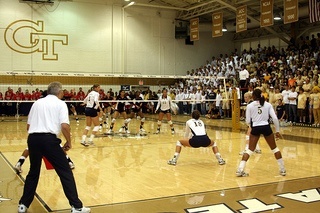 First of all, you are able to use your best passers on your team to handle the ball. One of the ways to make your team more effective is to keep all of your players working in their strengths. If your best passers are the only ones passing the ball, your passing efficiency should be higher if they are performing well.
First of all, you are able to use your best passers on your team to handle the ball. One of the ways to make your team more effective is to keep all of your players working in their strengths. If your best passers are the only ones passing the ball, your passing efficiency should be higher if they are performing well.
The other reason many people like this is that it reduces the amount of communication (and the amount of miscommunication) that can occur between passers.
One easy way for a team to reduce their effectiveness is to have the passers working against each other. This allows easy movement and communication since each player takes half of the court.
The major weakness of having two passers is that they are left to cover the entire half of the court. They are prone to lose short serves, serves to the outside line, or even deep serves. If the other team has an effective jump server, then two passers will probably not get the job done.
Three Passers
Among volleyball formations, this is the preferred for most teams.
The three passers are generally your outside hitters and the libero (if you are using one). This means that your best passers are passing and you can still run your offense.
The additional passer really helps if the other team has an aggressive jump server since more of the court is covered for passing.
The third passer allows you to cover the hard jump serve and also short float serves while using your best passers without disrupting the offense. That is why this is one of the preferred serve receive options.
Four Passers
Having four passers allows two players to take the short serves and two players to take the long serves.
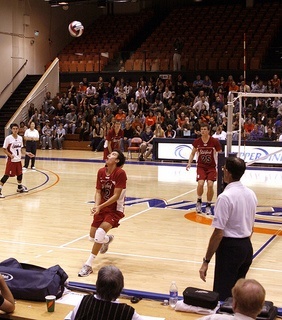 Usually, your passers will be the two outside hitters, the opposite hitter (or the second setter if you are playing a 4-2 or 6-2 offense) and the libero (or middle blocker on the back row). Setting it up this way still allows for the setter to set the ball as well as the front row middle blocker to line up for their quick attack.
Usually, your passers will be the two outside hitters, the opposite hitter (or the second setter if you are playing a 4-2 or 6-2 offense) and the libero (or middle blocker on the back row). Setting it up this way still allows for the setter to set the ball as well as the front row middle blocker to line up for their quick attack.
The main weakness of having four passers is that most teams do not have four great passers. That means this volleyball formation requires some players to play outside of their strengths.
Another issue with having four players receiving serve is that it requires great communication since more people are covering the area. There is a larger opportunity for two players to think that the other player is going to pass the ball. Miscommunication on serve receive will cost a point and there is a greater chance for that to happen when you use more passers.
Five Passers
This is where you have everyone but the setter passing the ball. You might be more effective using a brown paper bag to carry water than using five passers.
Five passers will sure cover the whole court, but you will not be able to run an offense. Plus, you will have some of your least effective passers passing the ball.
The main reason people use this is it is easy to have your players stay in their rotation spots and pass the ball. Very little knowledge of volleyball is required when the whole team is passing.
In fact, if that is the case, you are probably playing volleyball at a family reunion! Family reunion volleyball usually has no rules, no score, no offense. If that is what you are doing, you do not need this volleyball website and you should just enjoy the time with your family.
I hope this explanation of possible volleyball formations makes your team more effective when receiving the serve.
What’s Next?
Volleyball Scholarships – Learn what it takes to earn a scholarship for volleyball.
Increase Your Vertical Jump – Use this revolutionary workout to take your game to new heights!
Training For Volleyball – Why are you jogging for a sport that doesn’t require jogging? Learn a better way to workout and train.

